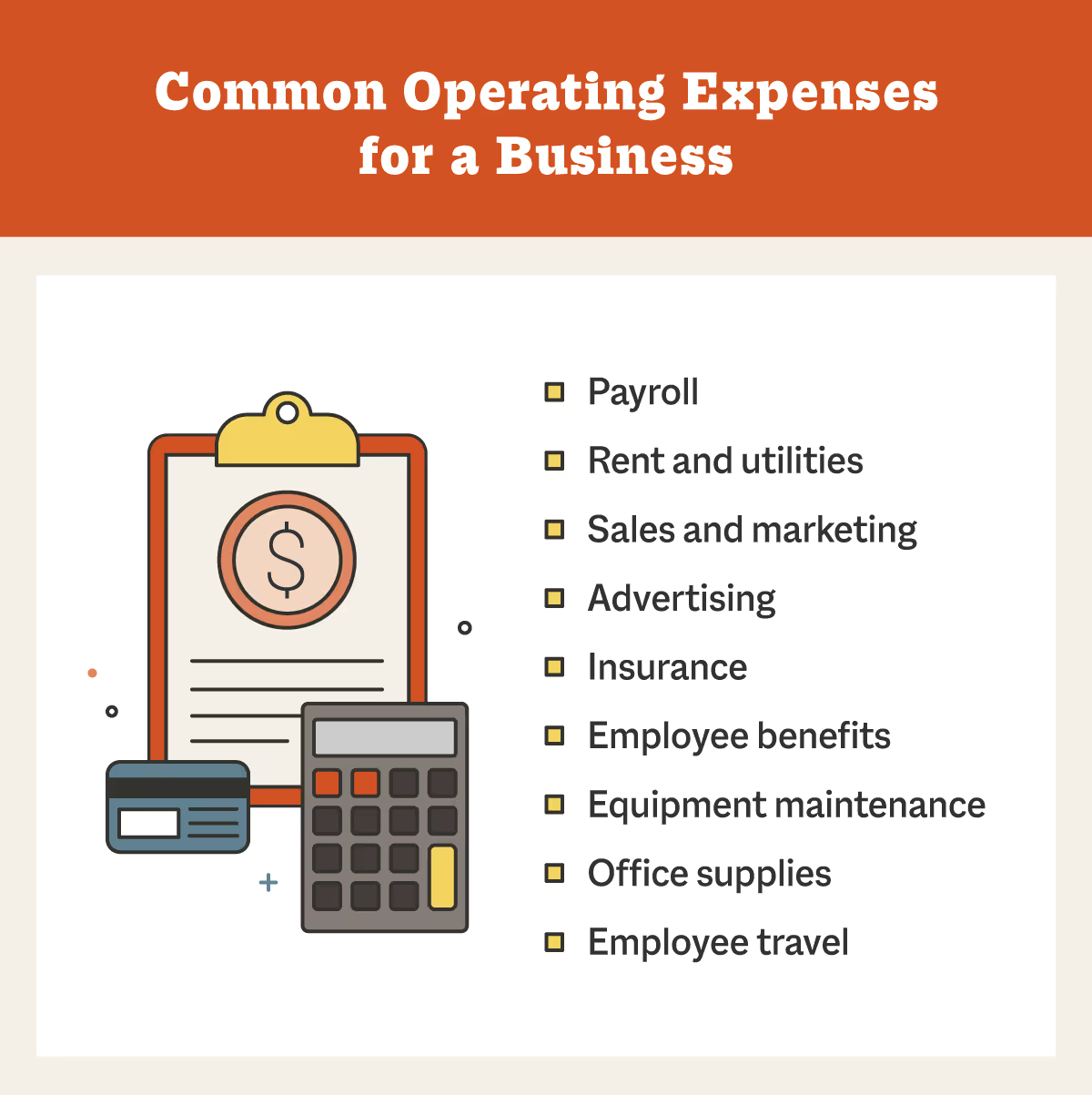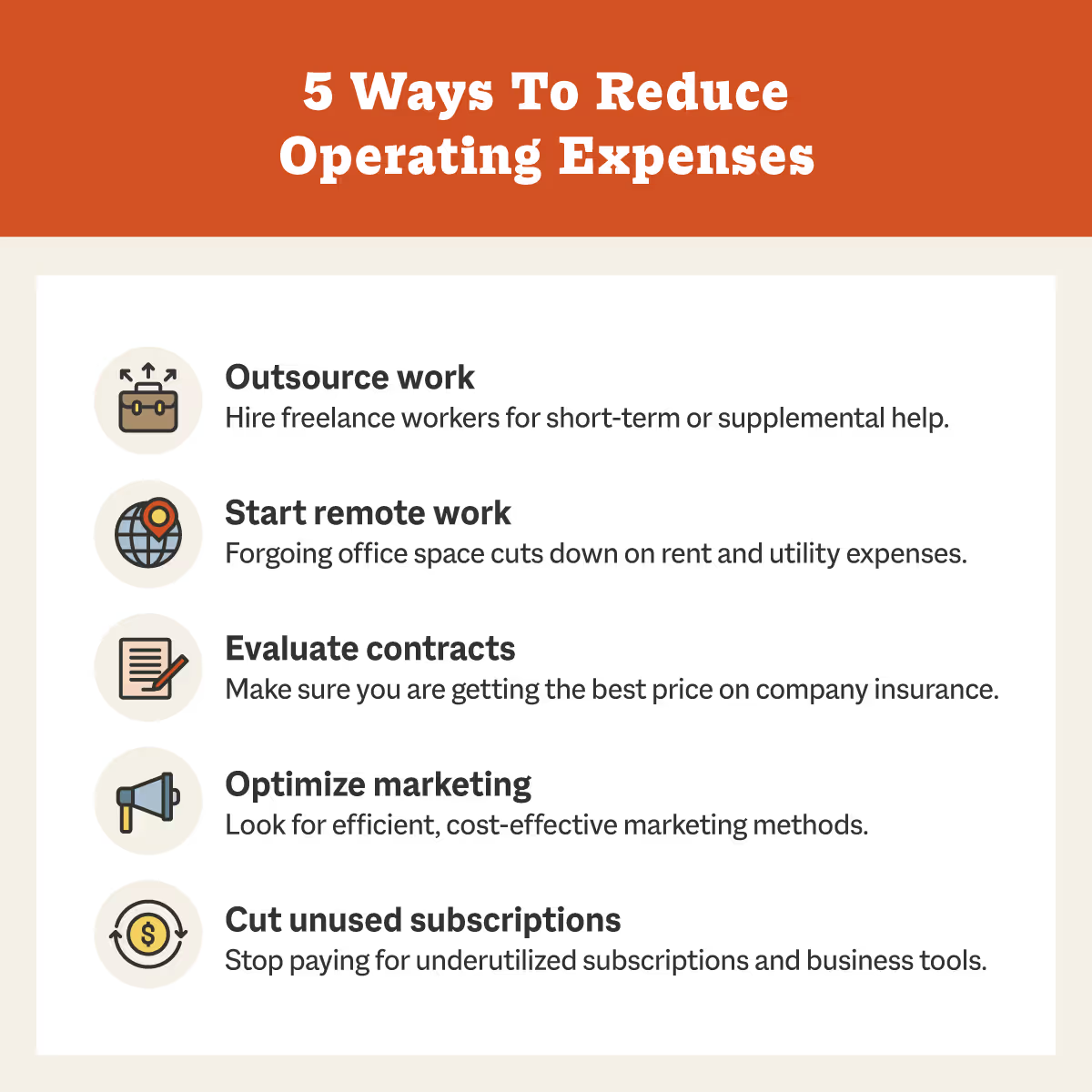Operating Expenses Formula: How To Calculate and Reduce Expenses
Operating Expenses Formula: How To Calculate and Reduce Expenses

For most businesses, a major goal is to increase cash flow and improve their bottom line — but this can’t be done without a strong understanding of operating expenses.
Operating expenses are the day-to-day costs that keep a business running, from rent and insurance to employee salaries. Despite the importance of this number, many business owners don’t have a clear picture of what contributes to these costs. That’s where we can help.
Below, we will detail how to find operating expenses, share the operating expenses formula, and highlight strategies to reduce them — such as partnering with virtual receptionists. Read on to get a better understanding of this important figure.
Table of contents
- What are operating expenses?
- How do you calculate operating expenses?
- The operating expenses formula
- How to use operating expenses
- 5 ways to reduce operating expenses
What are operating expenses?
Operating expenses, sometimes referred to as OpEx, are all of the costs to keep a business running that aren’t directly tied to the production of a product or service. Costs such as advertising, rent, utilities, and payroll would fall into this category.
OpEx is an essential aspect of a company’s financial statements, and understanding this accounting concept will give business owners insight into how operational costs are affecting profitability.
An important note: Since OpEx does not include costs tied to the production of a product or service, cost of goods sold (COGS) is not included. However, OpEx and COGS will combine in other important figures, which we’ll explain later.
Operating expense examples
As we’ve touched on, operating expenses are the costs to keep a business running, not including cost of goods sold. Common OpEx figures that can be found on a balance sheet include:
- Accounting, legal, or licensing fees
- Advertising budget
- Company vehicles
- Employee benefits
- Employee travel expenses
- Equipment maintenance and repair
- Insurance
- Office supplies
- Payroll
- Rent and utilities
- Research and development
- Sales and marketing
There may be other company-specific figures not found on our list of operating expenses, so tracking your business costs is important for staying on top of the financial health of your organization.

Non-operating expense examples
There are costs a business will have that may seem similar to operating expenses, but are not essential to its core operations. Examples of these non-operating expenses include:
- Amortization
- Depreciation
- Interest
- Lawsuit expenses or settlements
- Capital expenditures
While these and similar expenses don’t fall under the category of OpEx, they are still important figures for a business to be aware of and track.
How do you calculate operating expenses?
Now that we’ve established what qualifies as an operating expense, we’ll dive into how it can be calculated and how to use that figure in other helpful formulas.
Learning how to calculate operating expenses for your organization is as simple as adding them all together. A basic OpEx formula for a small business may look something like this:
Operating Expenses = Advertising + Payroll + Company Vehicles + Rent + Utilities + Insurance + Sales and Marketing + Supplies + Maintenance and Repairs
Alternatively, this formula is also accurate:
Operating Expenses = Revenue - Operating Income - COGS
Identifying and adding all of your OpEx figures together will lead you to your total operating expenses, from which you can assess the financial status of your business.
How to use operating expenses
Once you’ve found an accurate operating expense figure, you can use it in conjunction with a few other numbers to learn more about how your business is performing.
Calculate operating costs
Operating costs give a larger picture of a company’s day-to-day expenses by adding together operating expenses and cost of goods sold. The formula is expressed as:
Operating Costs = Cost of Goods Sold (COGS) + Operating Expenses
Operating costs is another way of assessing how a business is doing financially, and is used to see if there are any savings or budget cuts that can be made to maximize profits.
Calculate operating income (EBIT) and operating margin
Operating income, or earnings before interest and taxes (EBIT), is another helpful formula that uses operating expenses to determine the cash flow from key areas of a business. The formula is expressed as:
Operating Income (EBIT) = Gross Profit - Operating Expenses
Operating margin uses EBIT to determine how a business is performing financially compared to previous quarters and competitors. The formula is expressed as:
Operating Margin = EBIT / Revenue
Both of these figures can be used to get a good understanding of the financial status of a company and how it measures up to similar businesses in the same industry.
5 Ways to reduce operating expenses
Reducing operating expenses is one of the most effective ways for a business to improve its bottom line without directly affecting its product or service. Below are some of the top ways to do so.
1. Outsource help
It has never been easier for businesses to hire qualified workers on a per-project or freelance basis. Anything from copywriting to bookkeeping to B2B sales can be taken on by short-term experts. This can reduce payroll costs — and, by extension, operating expenses — for a business needing temporary or seasonal help with their operations.
Additionally, outsourcing can help to supplement revenue, such as outsourcing virtual receptionists like we offer at Smith.ai. Our team can help you set appointments, pre-qualify leads, and collect payments on your behalf so you can focus on the most important and profitable aspects of your business.
2. Consider hybrid or remote work
Another major source of operating expenses is rent, and switching to a hybrid or remote work model can help reduce utilities, maintenance, and other expenses associated with leasing an office space.
After the COVID-19 pandemic, more and more businesses have been switching to remote work models with great success. It’s easier than ever to stay connected with your team via messaging and calling services designed for remote employees — even when your team is located in different time zones.
Another benefit of remote work is saving on travel costs. Since meetings and other important company events can be held virtually, businesses will greatly limit their operating expenses in regards to employee travel, company vehicles, and any other related costs.
Indeed, employees used to working remotely will also be more apt to join virtual events in lieu of in-person programming, opening up the potential for even greater travel expense savings.
3. Evaluate insurance and utility contracts
Business owners should frequently check in on their insurance and utility contracts to make sure they’re getting the best deal possible.
Don’t be afraid to shop around with different providers to find the best rate. Monthly bills and contracts greatly contribute to operating expenses, and even a slight reduction in payments can mean big savings for your bottom line, freeing up extra cash flow for your business.
4. Scrutinize sales and marketing efforts
Advertising, sales, and marketing has the potential to be the largest piece of a company’s operating expenses. That’s why it’s important to consistently check in and evaluate marketing campaigns for their effectiveness and affordability.
You should always be conducting A/B testing or something similar to make sure that your advertisements are maintaining effectiveness. Additionally, businesses can save money by shifting focus to creative and inexpensive marketing methods such as outreach marketing.
There are many ways to successfully advertise a business, and optimizing those efforts is a great way to keep operating expenses low.
5. Cut unused software and other tools
There are a multitude of tools and other business software on the market that can improve a company’s day-to-day operations. That being said, they only help a business if they are being used frequently.
Take a look at your subscriptions and keep track of how often they’re used. Underutilized tools cost a business money, and may be better off swapped for more effective software — or scrapped altogether. Cutting down on nonessential software tools is a great way to save hundreds of dollars a year in operating expenses.

Reduce operating expenses with Smith.ai
Operating expenses is a financial figure that every business should be aware of. These essential day-to-day costs can be found with the operating expenses formula, and this figure tells a business how efficient its operations are.
There are plenty of ways to reduce these expenses and increase cash flow, including outsourcing help like we offer at Smith.ai.
Our 24/7 virtual receptionists can assist with screening calls, qualifying leads, and processing payments, so you can focus on the most profitable tasks for your business.
Book a consultation today to learn how Smith.ai can supercharge your communications and increase your bottom line.
Take the faster path to growth. Get Smith.ai today.
Key Areas to Explore
Technical Implementation Terms
Voice user interface (VUl) design
Speech recognition integration
Text-to-speech optimization
API connectivity and webhooks
Real-time data synchronization

Your submission has been received!














.svg)



